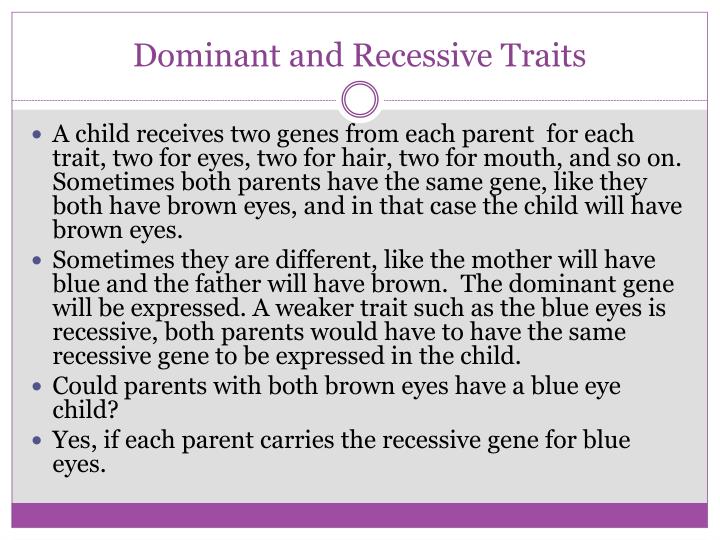
For example, the allele for blue eyes is recessive, therefore to have blue eyes you need to have two copies of the 'blue eye' allele. Recessive alleles only show their effect if the individual has two copies of the allele (also known as being homozygous).An example of this is the blood group AB which is the result of codominance of the A and B dominant alleles. The resulting characteristic is due to both alleles being expressed equally. If both alleles are dominant, it is called codominance.


For example, the allele for brown eyes is dominant, therefore you only need one copy of the 'brown eye' allele to have brown eyes (although, with two copies you will still have brown eyes).

Refers to a trait that is expressed only when genotype is homozygous a trait that tends to be masked by other inherited traits, yet persists in a population among heterozygous genotypes.

What does it mean when a trait is recessive? Sickle cell anemia: abnormal red blood cells make it difficult to transport oxygen throughout the body.Albinism: an albino lacks pigment or coloration in the skin.Eye colour and blood groups are both examples of dominant/recessive gene relationships. An allele of a gene is said to be dominant when it effectively overrules the other (recessive) allele. The most common interaction between alleles is a dominant/recessive relationship. What are dominant genes and recessive genes?ĭominant and recessive genes. For example, having a straight hairline is recessive, while having a widow’s peak (a V-shaped hairline near the forehead) is dominant. Many traits we observe in the people around us are examples of dominant and recessive traits. What are examples of dominant and recessive traits?


 0 kommentar(er)
0 kommentar(er)
